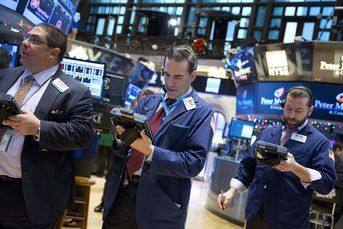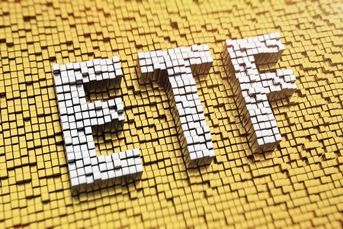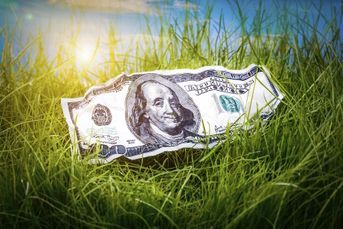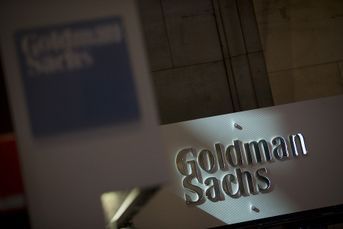Retro is chic in this technology ETF
Young '90s tech companies have matured into more stable adults with tons of cash that translates into dividends.
Nirvana. Seinfeld. Michael Jordan. Who doesn’t love the 90s?
Turns out the hot names of the ’90s are in again when it comes to investing in the technology sector. Those young ’90s tech companies have matured into more stable adults with tons of cash. Companies like Microsoft Corp. (MSFT), Cisco Systems Inc. (CSCO), Oracle Corp. (ORCL) and Intel Corp. (INTC) have held up amid a tech stock sell-off that has the Global X Social Media ETF (SOCL), filled with new-generation players like Facebook Inc. and LinkedIn Corp., stumbling 18 percent in the past month. That has many investors thinking about going retro and playing it safer with their tech exposure.
When it comes to playing it safe in tech, no ETF is as conservative as the First Trust Nasdaq Technology Dividend Index Fund (TDIV). It tracks the tech companies paying the highest dividends. That dividend theme is what keeps volatile young social-media stocks out of the portfolio and leaves TDIV with a vintage “I Love the ’90’s” feel from its stakes in large, old-guard tech companies. Top holdings include Intel, Cisco and Microsoft, each with 8 percent of assets, and Oracle with a 4 percent weighting. The four companies, which had an average annual return of 60 percent during the 1990s, are all up in 2014 and in the past month during the sell-off.
That explains why TDIV has the lowest volatility of the 36 tech ETFs and is about half as volatile as the super-jumpy SOCL. This can be seen in the stormy past month, during which TDIV was up 1.6 percent, SOCL lost 18.4 percent and the hugely popular Technology Select Sector SPDR Fund (XLK) lost 2.5 percent. (XLK’s 15 percent stake in Internet stocks is hurting its performance.) There’s also a value angle to TDIV. It has an average price-to-earning ratio of 14, lower than that of the S&P 500. In contrast, SOCL has an average price-to-earnings of 50.
TDIV has had a DiMaggio-esque streak of positive inflows for 20 straight months since its August 2012 inception. It even has positive inflows so far in April — a minor miracle, given the recent carnage in tech. The flows have been slow and steady, which indicates that smaller (read: more stable) investors are doing the buying. That, plus all the attention social media got, is why TDIV has slipped under the radar and become a sleeper hit with assets now at $460 million. TDIV charges investors 0.5 percent of assets annually. That’s in line with the amount charged by other such “smart beta” sector ETFs that veer from traditional market-weighted approaches in structuring their portfolios. It trades 140,000 shares per day.
Many buy-and-hold investors are using TDIV to supplement their allocation to equity-income products. It’s widely known that many of the most popular dividend ETFs have little tech exposure. For example, the iShares Select Dividend ETF (DVY) — a $12 billion monster — has 1 percent allocated to tech and 36 percent allocated to utilities, despite the fact that tech is the largest sector weight in the S&P 500. It’s not that DVY is doing anything wrong, it’s just that when you screen and weight the broad market for dividends, a big slug of utilities is what you get. Thus forms TDIV’s value proposition to investors: more dividend diversification.
Dividends in the tech sector is something of a growth story, as well. “Tech dividends are low compared to high-yielding sectors like utilities, but that also means there is room for payout growth,” according to Todd Shriber at ETF Trends. TDIV has a yield of 2.5 percent and a one-year dividend growth rate of 43 percent. To put that in perspective, the S&P 500 Index has a yield of 1.9 percent and a one-year dividend growth of 9.3 percent.
So should you put aside your love of social media and go all-in with an old-guard tech ETF like TDIV? It depends on your time horizon, but investors could definitely use it to diversify their income and play tech more safely. More aggressive investors may want to hang in there with their social-media/Internet exposure — most people would agree those companies have a bright future, despite the recent turmoil. They are in many ways shaping the future much like Microsoft and Oracle did in the ’90’s.
Eric Balchunas is an exchange-traded-fund analyst at Bloomberg. This story originally appeared on Bloomberg.
Learn more about reprints and licensing for this article.








